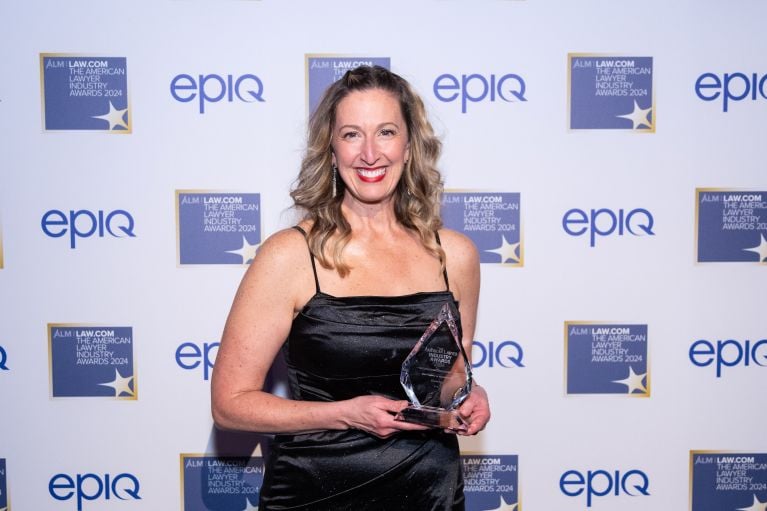Despite North Carolina Program, Runway Not Yet Clear for Widespread Use of Drones to Deliver Blood
Federal Aviation Administration regulations allow for the commercial use of drone technology at a minimum-risk threshold, making meaningful transport of blood and other medical materials via the unmanned aircraft unlikely in the near future, legal experts told Corporate Counsel.
April 02, 2019 at 12:18 PM
4 minute read
 Photo: Shutterstock
Photo: Shutterstock
A new use for drones is taking off. WakeMed Health and Hospitals in Raleigh, North Carolina, is using the unmanned aircraft to transport blood from one campus building to another.
And, at least for the hospital, the regulatory obstacles associated with the program aren't that much different from those that currently are required, said Susan James, chief legal officer at WakeMed.
“When we first sat down, we kept trying to make it hard, kept asking, 'Why is it different with the drone?'” she said in an interview. “But the same regulations that apply to us taking things in a car will be the same that apply to us taking it in a drone. If there's a car crash, and we lose samples, those are the same issues as if the drone crashes, and we lose samples.”
But don't expect to see drones whizzing overhead through cities and states en route from one health care facility to another with blood or other hazardous materials in tow—at least not for a while.
That's because Federal Aviation Administration regulations allow for the use of drone technology “at a very minimum risk threshold,” said Mark Aitken, senior policy adviser at Akin Gump Strauss Hauer & Feld.
For example, for so-called “revenue flights” like the ones being conducted at the North Carolina hospital, the aircraft, including its attached package, must weigh less than 55 pounds, remain within the visual line of sight, and is prohibited from crossing state lines, unless additional FAA waivers were granted. There also is a U.S. Department of Transportation economic authority compliance component.
Still, the short flights across the North Carolina hospital campus are “a great milestone,” Aitken said, adding the program “shows how you can actually facilitate this through the current regulatory mechanism.”
Waivers can be given for those provisions, but to date the FAA has granted a limited number of waivers to the “visual line of sight” requirement, Aitken said.
A waiver of “visual line of sight is going to be the key to unlock the potential,” of the use of drones in a commercial capacity, said Laura Ponto, counsel at Hogan Lovells and former head of public policy and regulatory affairs for Google X's Project Wing. “It's going to take a coordination between the private sector and the regulators to make sure that [the technology] can be integrated safely, and that can take some time.”
North Carolina is one of less than a dozen sites nationwide to participate in the FAA's Integration Pilot Program, which is designed to provide the regulatory tools needed to explore expanded operations, Aitken said.
WakeMed's CLO James said the hospital plans to expand the program to include miles-long routes between different Raleigh-area WakeMed buildings, adding that compliance with the FAA lies with the drone operator, not the hospital. The current flights are one-third of a mile.
“On the health care side, the [regulatory process] is not as involved as we initially thought it would be,” she said.
Other health care facilities looking to introduce a medical-specimen drone delivery program—either in a manner similar to WakeMed's current format or in an expanded capacity if and when updated regulations are implemented—must consider many factors, legal experts said.
As with traditional medical air transport, there are many risks, arguably more with drones, associated with not managing materials carefully and securely, said Linda Pissott Reig, shareholder at Buchanan Ingersoll & Rooney.
“Can you imagine if there were an instance where drones were crashing and materials were spilling and not able to be controlled?” she said. “You have to ask, 'Are they truly protected and secure? Is our system robust enough to ensure that if there is some mishap they are.'”
Robert Van de Vuurst, a partner at Baker, Donelson, Bearman, Caldwell & Berkowitz, advises that “the best thing that hospitals can do from a liability perspective is exactly what they're doing now” with traditional air medical transport.
“Contract out to a vendor, make sure that vendor knows what they're doing and can operate the drone safely,” he said. “Make sure the drone is insured, and then require the vendor to indemnify for anything.”
This content has been archived. It is available through our partners, LexisNexis® and Bloomberg Law.
To view this content, please continue to their sites.
Not a Lexis Subscriber?
Subscribe Now
Not a Bloomberg Law Subscriber?
Subscribe Now
NOT FOR REPRINT
© 2025 ALM Global, LLC, All Rights Reserved. Request academic re-use from www.copyright.com. All other uses, submit a request to [email protected]. For more information visit Asset & Logo Licensing.
You Might Like
View All
'True Leadership Is About Putting Others First': 2024 In-House Award Winners Inspired, Took Road Less Traveled

Elaine Darr Brings Transformation and Value to DHL's Business

From Tires to Tracks: Goodyear Chief Risk Officer Joins Union Pacific as Legal Chief

CSX Joins Rest of Big Four Railroad Companies in Installing New Generation of Legal Leadership
Trending Stories
- 1Big Law Firms Sheppard Mullin, Morgan Lewis and Baker Botts Add Partners in Houston
- 2Lack of Jurisdiction Dooms Child Sex Abuse Claim Against Archdiocese of Philadelphia, says NJ Supreme Court
- 3DC Lawsuits Seek to Prevent Mass Firings and Public Naming of FBI Agents
- 4Growth of California Firms Exceeded Expectations, Survey of Managing Partners Says
- 5Blank Rome Adds Life Sciences Trio From Reed Smith
Who Got The Work
J. Brugh Lower of Gibbons has entered an appearance for industrial equipment supplier Devco Corporation in a pending trademark infringement lawsuit. The suit, accusing the defendant of selling knock-off Graco products, was filed Dec. 18 in New Jersey District Court by Rivkin Radler on behalf of Graco Inc. and Graco Minnesota. The case, assigned to U.S. District Judge Zahid N. Quraishi, is 3:24-cv-11294, Graco Inc. et al v. Devco Corporation.
Who Got The Work
Rebecca Maller-Stein and Kent A. Yalowitz of Arnold & Porter Kaye Scholer have entered their appearances for Hanaco Venture Capital and its executives, Lior Prosor and David Frankel, in a pending securities lawsuit. The action, filed on Dec. 24 in New York Southern District Court by Zell, Aron & Co. on behalf of Goldeneye Advisors, accuses the defendants of negligently and fraudulently managing the plaintiff's $1 million investment. The case, assigned to U.S. District Judge Vernon S. Broderick, is 1:24-cv-09918, Goldeneye Advisors, LLC v. Hanaco Venture Capital, Ltd. et al.
Who Got The Work
Attorneys from A&O Shearman has stepped in as defense counsel for Toronto-Dominion Bank and other defendants in a pending securities class action. The suit, filed Dec. 11 in New York Southern District Court by Bleichmar Fonti & Auld, accuses the defendants of concealing the bank's 'pervasive' deficiencies in regards to its compliance with the Bank Secrecy Act and the quality of its anti-money laundering controls. The case, assigned to U.S. District Judge Arun Subramanian, is 1:24-cv-09445, Gonzalez v. The Toronto-Dominion Bank et al.
Who Got The Work
Crown Castle International, a Pennsylvania company providing shared communications infrastructure, has turned to Luke D. Wolf of Gordon Rees Scully Mansukhani to fend off a pending breach-of-contract lawsuit. The court action, filed Nov. 25 in Michigan Eastern District Court by Hooper Hathaway PC on behalf of The Town Residences LLC, accuses Crown Castle of failing to transfer approximately $30,000 in utility payments from T-Mobile in breach of a roof-top lease and assignment agreement. The case, assigned to U.S. District Judge Susan K. Declercq, is 2:24-cv-13131, The Town Residences LLC v. T-Mobile US, Inc. et al.
Who Got The Work
Wilfred P. Coronato and Daniel M. Schwartz of McCarter & English have stepped in as defense counsel to Electrolux Home Products Inc. in a pending product liability lawsuit. The court action, filed Nov. 26 in New York Eastern District Court by Poulos Lopiccolo PC and Nagel Rice LLP on behalf of David Stern, alleges that the defendant's refrigerators’ drawers and shelving repeatedly break and fall apart within months after purchase. The case, assigned to U.S. District Judge Joan M. Azrack, is 2:24-cv-08204, Stern v. Electrolux Home Products, Inc.
Featured Firms
Law Offices of Gary Martin Hays & Associates, P.C.
(470) 294-1674
Law Offices of Mark E. Salomone
(857) 444-6468
Smith & Hassler
(713) 739-1250






